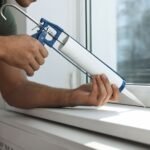Some homeowners decide to tile an interior wall in order to change the overall appeal in a particular space. But with renovation showering in many people’s minds there is always one hurdle that most seek to overcome:`Yes, wall tiles can be affixed to a moist wall. This is because the moisture barrier will be the focus in the following sections: barabas and moisture barriers, knowing the difference between the fine painting collar elastomer and the moist walls, and wall preparation for the application of PMMA or tile Glue. Likewise, the application of this content also involves placing a cement tile on a moisture wall and wall mounting tips.
Table of Contents
ToggleCan You Put Wall Tile Over Moist Wall?
In short, no, you shouldn’t install tiles directly over a wet wall. The presence of moisture under tiles can lead to various problems, such as the onset of mold, deterioration of bonds, or cracked joints. In order to successfully install a walled tile, one must develop a particular kind of wall that is dry, clean and meets the required conditions.
As much as the tiles are able to resist moisture on their surface, it will always be damaging in the future if the wall beneath it isn’t good. Improperly layered tile due to moisture can cause all the tiles to eventually get loose and become a costly affair. In this regard, it’s important to deal with any dampness or leaks within the wall before commencing on the tiling process.
Is It Possible to Place Wall Tile Over Moist Wall?
However, there are moisture prone walls which can be adequately prepared before putting tiles on it but moisture can still be a problem when one tries to put tiltes on the wall surface. In this respect, the focus is to ensure there are moisture barriers on walls. This will serve to enhance the longevity of the walls as well.

If you are dealing with an area such as a shower, cement boards or backer boards should be used. Using these materials will provide the tiles with a sturdy base that is resistant to moisture. At the same time, using waterproof grout and Glue is cost effective since they will prevent any chances of moisture.
Risks of Tiling Over Wet or Damp Walls
A wet or poorly prepared wall leads to many issues when tiling over such a surface the following problems can arise:
Mold and Mildew Growth: Excess moisture behind the tiles causes repetition of the circumscription and even supports and maintains patterns of growth of mold and mildew. Not only are these walls damaged by mold and mildew, but they also pose a health hazard to many individuals.
Cracked Tiles and Grout: The moisture present in the environment will lead to expansion or contraction of the wall material which will put undue pressure onto the tiles and grout. The result of this is cracks that destroy the aesthetic appearance and efficiency of the tiled wall.
Structural Damage: Most severe situations are when moisture present behind the tiles penetrates drywall or wood framing or gets into insulation creating major structural damage to the home.
How to Prepare a Wall for Tiling?
Moisture-related issues have to be averted and this calls for precise education. To obtain a great wall for tiling, adhere to those steps:

Diagnose and Treat Internal Moisture Problems
When wetness is noted, the wall should be scanned for sources of water and other leaks. Undertake plumbing repairs, waterproofing of the site and then proceed. A moisture meter can be used to determine whether the wall is still too wet for conducting tiling.
Wipe Dust off Walls and Other Surfaces which will be Installed
Glue can easily be affected by dirt, grease, or debris during construction. The surface has to be carefully cleaned with soap and water, and then dried. If such grime is not cleared, get a degreaser.
Fill Cracks and Holes
Look for cracks or holes on the wall and fill them up with filler or plaster. Due to the presence of dichotomy, it became necessary to use sandpaper to touch up any rough edges on the surface to prepare it for the tiles.
Use Primer or Sealant
If the wall has pores or is able to absorb humidity, primer or sealant can be used to cover the area. This improves the quality of the surface and sorts the substrate so that it will provide better protection and bonding. Additionally, a primer allows for the drying of the Glue on very porous surfaces without any rush.
Install Cement or Backer Board (If Needed)
Consider cement board or tile backer board for the walls in rooms that tend to get water like the bathroom. This means well these boards extend the tiles’ usability and serve as a dependable surface to glue them on. Fix the boards by screws without gaps in between.
Provide Lists of Guidelines for the Placement of Tile
Using chalk or a pencil, ensure that the arrangement of tiles is drawn out prior to the application of any Glue. Use vertical and horizontal lines for the placed tiles to ensure they are symmetrical and in line.
Using Waterproof Tile Glue or Thin-Set Mortar for Wet Areas
Waterproof tile Glue or thin-set mortar should preferably be used in conditions having high wetness like in kitchens or bathrooms. Their role is to ensure that the tiles are adjoined stoutly irrespective of the levels of moisture present in the area.
Tips for Preventing Moisture and Ensuring Waterproof Walls
Installing a Waterproof Membrane: In the case of moisture-creating situations like bathrooms or shower places, embed a waterproof membrane between the wall and tiles as a barrier to moisture.
- Applying Epoxy Grout: Epoxy grout is distinguished from common cement grout in that it has greater resistance to natron or staining making it further preferable in wet areas.
- Providing Sufficient Airflow: Air circulation decreases the chances of moisture accumulation in the room. Be it exhaust fans or simply windows, utilize such tools in moisture-building environments to enhance wall dryness.
- Caulking Wall Corners and Edges: For joints, corners and edges that are potential leak spots, silicone caulk can be used.
Can You Tile Over Painted Walls?
Provided that the wall has a coat of paint, there are a few more additional measures to undertake in order to facilitate painting. It is necessary to remove paint gloss by scuffing so that a better Glue bond may be created along the powder coated surface. Check that the paint is not chipped or scraped. The same goes for chunks that are not painted and chipped from moisture, correct the problem that caused the damage in the first place before moving on.
When to Seek the Help of an Expert
Although tiling by yourself may be enjoyable, it comes with a potential drawback of having to tackle the problem of moisture. If you do not have adequate knowledge of the moisture level of your wall, or how to conduct waterproofing, then seeking professional assistance would be the right choice. A trained professional will be capable of examining your wall, showing you the right material to use and the proper procedures to install it so that such a kind of problem does not arise in future.
Conclusion
How To Put Wall Tile Over Moist Wall?” or “How to put wall tile on moisture wall?” is the same with the response to the ta question. Moisture depends on the nature of the wall, and that moisture weakens the tile’s adhesion. The two scenarios would be disastrous and would lead to costly repairs. It is crucial that you do proper preparation of the wall to eliminate any deficiencies that would affect the attractiveness and longevity of the tiled surface.
The question on , “How to prepare a wall for tiling,” the answer is concentrating on readings more structural aspects of the wall such as moisture, surface clearing, damage repair, and appropriate materials. Walls which are likely to get wet should consider placing a cement board or waterproof membranes and use suitable Glue and grouts. The cost of installing wall tiles and the relevant grouts should never be a roadblock for meticulous preparation that would lead to the creation of stunning floor tiles that would withstand moisture.
FAQ
What do you mean by a wall moisture barrier?
A wall moisture barrier is a reasonably protective layer that prevents water from going into walls and damaging them; it can be a plastic sheet, membranes or others.
Is it possible to have a moisture barrier under the tile?
Yes, moisture barriers are quite frequently installed under tiles, particularly in wet areas such as bathrooms, to avoid damage of the materials underneath due to water from tile surfaces.
How relevant is a moisture barrier underneath the tile?
It helps to stop water from getting into the wall and over time bouncing the growth of mold, mildew and even the deterioration of the building structure itself.







